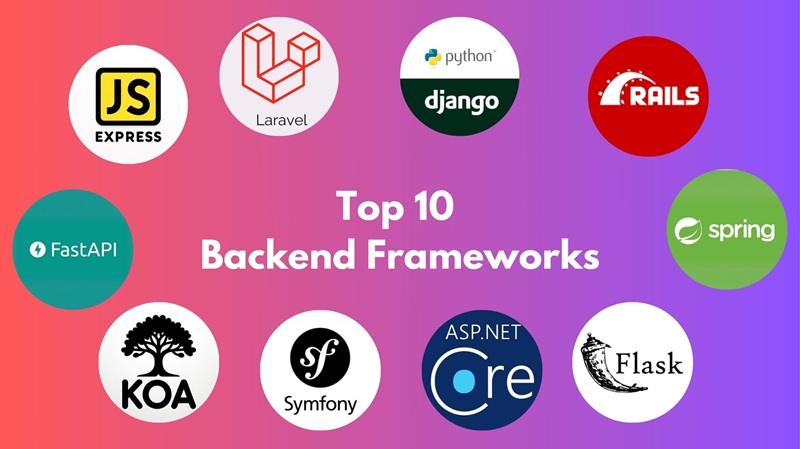India has emerged as a global powerhouse in software development, with a dynamic ecosystem that supports innovation, talent, and scalability. Over the past two decades, India has evolved from being an outsourcing destination to a hub for cutting-edge product development, AI innovation, SaaS unicorns, and digital transformation initiatives. As the world accelerates toward digital-first strategies, India’s software development industry continues to play a pivotal role in shaping global technology trends.
The Indian software development companies contributes significantly to the country’s economy, accounting for nearly $245 billion in revenue in FY2023, according to NASSCOM. With a robust talent pool, cost-effective solutions, and an increasing focus on quality, India is not just keeping up with global trends—it is helping set them.
In this blog, we’ll explore the top trends driving software development in India and the vast opportunities available to businesses, entrepreneurs, and tech professionals.
1. Rise of AI and ML-Driven Development
Artificial Intelligence (AI) and Machine Learning (ML) are revolutionizing software development globally, and India is at the forefront of this change. Indian developers and tech companies are actively integrating AI/ML into software to make applications smarter, predictive, and self-learning.
Key Trends:
- AI-based testing and bug detection tools (e.g., Test.AI, Mabl)
- Intelligent automation in development pipelines using ML
- Chatbots, NLP engines, and recommendation systems
- AI-driven data analytics platforms
Opportunity:
India is witnessing a growing demand for AI-skilled developers. Startups and IT services firms are investing in AI capabilities to enhance customer experience, reduce operational costs, and build next-gen products.
2. Growth of the SaaS Ecosystem
India’s Software as a Service (SaaS) market is booming. Companies like Zoho, Freshworks, Postman, and Chargebee have shown how Indian-born SaaS platforms can serve global clients and scale profitably.
Why It Matters:
- India’s SaaS revenue is expected to reach $35 billion by 2027, according to Bain & Company.
- Startups are increasingly opting for cloud-native, subscription-based models that lower the entry barrier for customers.
- SaaS enables companies to rapidly deploy, test, and scale applications.
Opportunity:
For developers, this means more openings in cloud development, API integrations, DevOps, product management, and security roles.
3. Digital Transformation in Enterprises
Indian enterprises are embracing digital transformation to stay competitive. This shift has increased the demand for custom software development, the modernization of legacy systems, and enterprise-grade applications.
Popular Areas of Focus:
- ERP and CRM solutions tailored for SMEs
- Low-code/no-code platform development
- Industry-specific digital platforms for BFSI, healthcare, and retail
Opportunity:
As businesses digitize operations, software developers have immense opportunities in backend engineering, UX/UI design, mobile-first development, and integration projects.
4. Blockchain and Web3 Development
Although still nascent, blockchain and Web3 are gaining traction in India. With a thriving developer community and increasing startup activity in the DeFi and crypto space, blockchain is becoming a viable sector for software development.
Key Use Cases:
- Smart contracts development on Ethereum, Solana
- NFT marketplaces and decentralized apps (DApps)
- Supply chain transparency and digital identity management
Opportunity:
Developers can upskill in Solidity, Rust, and Web3.js to tap into the demand from both global blockchain startups and local ventures.
5. Expansion of IT Services and Global Delivery Centers
India continues to be the preferred destination for IT outsourcing due to its massive talent pool and cost advantages. Top global companies like Microsoft, Google, and Amazon have established large R&D centers and captive units in cities like Bengaluru, Hyderabad, and Pune.
What’s New:
- A shift from traditional outsourcing to strategic product co-development
- Nearshore-like quality with global time-zone coverage
- Growing preference for Agile, DevSecOps, and microservices-based delivery
Opportunity:
Tech professionals in India have access to global projects and enterprise-grade work environments while working with the world’s leading brands.
6. Focus on Cybersecurity Solutions
With rising cyber threats and increasing regulatory scrutiny, cybersecurity has become a top concern. Indian software firms are building tools for identity management, fraud detection, encryption, and risk mitigation.
Key Trends:
- Shift-left security in DevOps (DevSecOps)
- Cloud-native security solutions
- AI-driven threat detection and response
Opportunity:
There’s a growing demand for software engineers skilled in secure coding, ethical hacking, zero-trust architecture, and compliance-based development.
7. Remote Work and Global Freelance Development
The pandemic normalized remote work, and Indian developers have benefited immensely from this shift. Freelance and contract-based software development has exploded, giving Indian talent access to global markets without relocating.
Key Platforms:
- Toptal, Upwork, Freelancer, GitHub Jobs
Opportunity:
Indian developers, especially in Tier 2/3 cities, are increasingly earning in foreign currency by offering remote software services in areas like mobile development, front-end/back-end engineering, and automation scripting.
8. Mobile-First and Progressive Web App (PWA) Development
With over 750 million internet users, most of whom access the internet via smartphones, mobile-first development is a priority in India. Progressive Web Apps are bridging the gap between mobile and web experiences, especially in rural and semi-urban markets.
Tech Stack:
- Flutter, React Native for cross-platform apps
- PWAs for low-bandwidth users
- Backend solutions using Firebase, AWS Amplify
Opportunity:
Developers building intuitive, lightweight, and offline-friendly apps are in high demand, especially for fintech, edtech, and e-commerce solutions.
9. Government Initiatives and Support
The Indian government is playing a pivotal role in promoting digital growth. Initiatives like Digital India, Startup India, and Make in India have encouraged homegrown innovation.
Recent Highlights:
- Launch of ONDC (Open Network for Digital Commerce)
- DPI (Digital Public Infrastructure) platforms like Aadhaar, UPI, and CoWIN
- Funding support through SIDBI and MeitY Startup Hub
Opportunity:
Startups and software companies can tap into government schemes, incentives, and policy support to scale their digital offerings.
10. Skill Development and EdTech Boom
India’s software development ecosystem is being powered by an ever-expanding base of skilled developers, thanks to platforms like Coursera, UpGrad, Scaler, and coding bootcamps. Continuous learning is embedded in the tech culture.
Focus Areas:
- Full stack development
- AI/ML and Data Science
- DevOps and Cloud Engineering
- Blockchain and Web3
Opportunity:
With over 5 million software professionals and counting, India remains one of the most fertile grounds for software innovation and R&D.
Conclusion
India’s software development landscape is vibrant, future-ready, and packed with opportunities. Whether you’re an entrepreneur looking to build your next SaaS product, an enterprise undergoing digital transformation, or a developer seeking to upskill in emerging technologies, India offers a thriving ecosystem.
From AI and SaaS to blockchain and cybersecurity, the above trends reflect how Indian software developers are not just participating in global innovation—they are leading it. With continued investment in skills, infrastructure, and policy support, India is poised to remain a global software development powerhouse for years.
Whether you’re looking to hire Indian development talent, invest in a software startup, or enter the Indian tech market, now is the time. Keep an eye on these trends and align your strategies accordingly to leverage the full potential of the Indian software development landscape.










